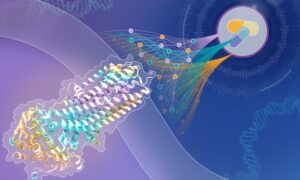
„One scoop in a cone, please!“
Introduction
„One scoop in a cone, please!“ An interactive science labbook on ocean pollution
Plastic pollution poses a great threat to the environment. Every year, more than 8 million tonnes of plastic end up in the oceans, endangering marine life. “‘One scoop in a cone, please!’ – An interactive science labbook on ocean pollution“ introduces children between 5 and 8 years old to the issue of marine plastic pollution.
In a mix of scientific facts and hands-on experiments, the video resource takes children on a journey following the fate of a piece of plastic in the ocean. Children actively explore the science behind plastic pollution in a series of do-it-yourself experiments, which can be done with simple household materials. They learn how scientists study nanoplastics and get inspired to think about ways to help reduce plastic pollution in their daily lives.
Across three chapters, the interactive science labbook addresses the following questions:
1. What is happening to the plastic in the ocean?
2. What are possible threats of very tiny plastic bits?
3. What can all of us do to help keep our oceans clean?
The video resource is accompanied by an activity booklet.
Content overview
The video resource comprises of three chapters, following Max, Lisa and Lilly on a journey on ocean pollution.
Chapter 1
This chapter explores what happens to plastic in the ocean. In three simple experiments, the young learners test what kind of plastic floats and create their own waves and currents.
Chapter 2
The following chapter looks at the reasons why nanoplastics threaten the marine environment. EMBL researchers explain why and how they use X-rays to study particles of plastic from the oceans. Two do-it-yourself activities inspire to build a simple magnifier and observe small objects and to test the attractive characteristic of plastic.
Chapter 3
The video closes with examples of actions children from around the world take in their daily lives to reduce plastic pollution.
The activity booklet provides an optional add-on to the video resource.
Video resource
The full video resource takes 30 minutes to watch. Plan more time if you are doing all the hands-on experiments alongside it. To navigate to specific sections in the video, please use the timestamp indicators as a reference.
Timestamps
Opening (00:00-02:52 min) Meet Max: 00:00-01:16 Science news - intro to ocean plastic pollution: 01:17-02:52 Chapter 1 (02:53-14:05 min) Activity “Does all plastic float?”: 03:00-05:45 Science news - density and plastic pollution: 05:46-7:09 Activity “Create your own waves in a bottle”: 07:10-08:56 Activity “Making currents”: 08:57-12:58 Science news - Tara expedition: 13:00-14:05 Chapter 2 (14:05-25:25 min) EMBL research - “Do small bits matter?”: 14:05-19:26 Activity “Looking at smaller stuff”: 19:27-21:57 Activity “Attractive plastic”: 21:58-25:25 Chapter 3 (25:26-30:30 min)
Activity booklet
The video resource is accompanied by a printer-friendly activity booklet which provides the instructions for the five hands-on experiments along with space for personal notes. If also offers an additional set of fun activities related to the storyline of the video which can be done directly in the printed booklet.

Topic area: Environmental biology
Age group: < 10
Author: Melissa Graewert, Eva Haas
Share:



